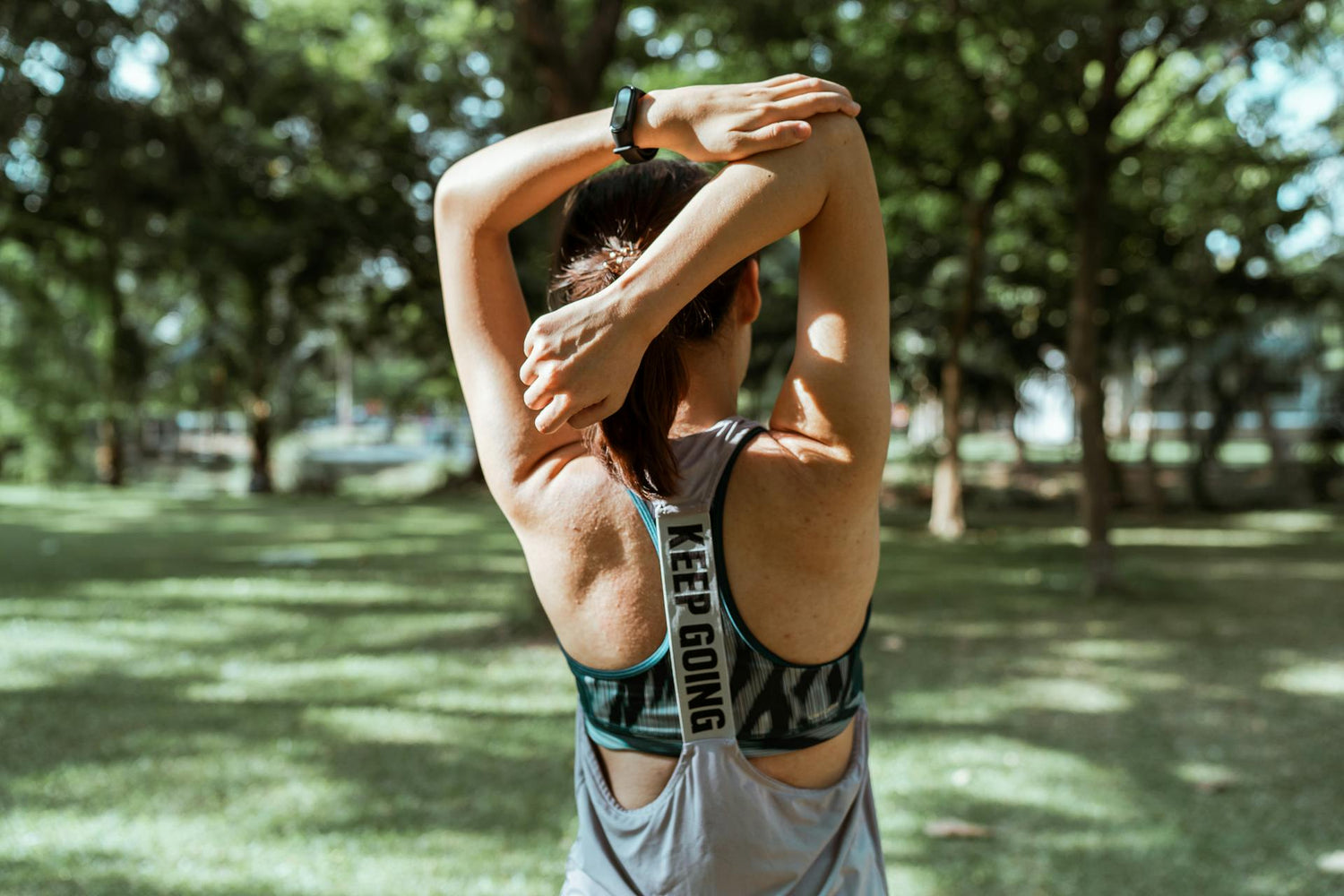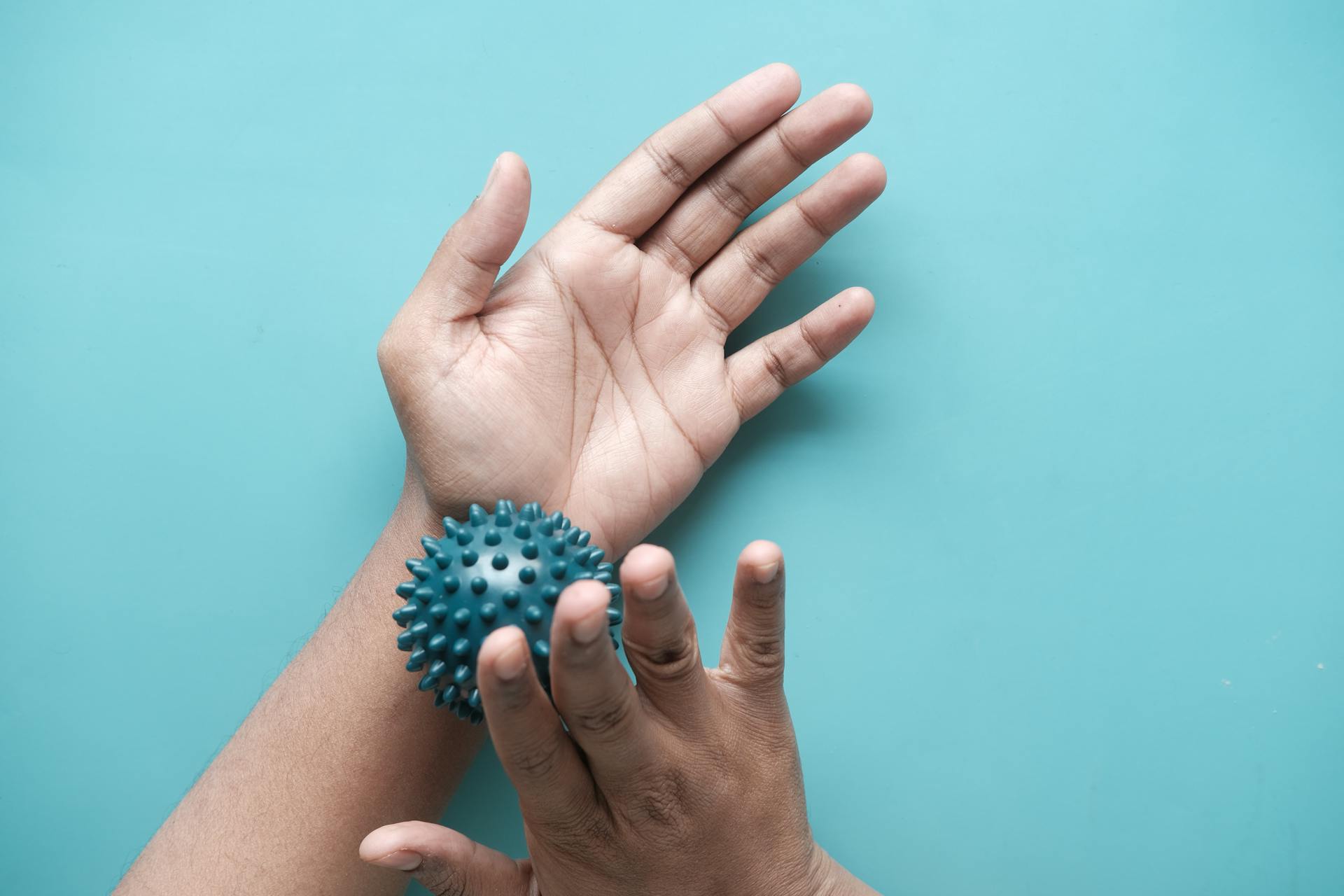As the years go by, you might wake up with stiff and tight muscles more often than you used to. This phenomenon — known as muscle stiffness, rigidity, or tension — happens to nearly everyone at some point, and it can become more bothersome as you get older.
So, what causes muscle stiffness as we age? Put simply, bodies can become less resilient to things that cause tightness over time. But what exactly are these things, and how can you avoid them?
Below, learn about what causes muscle stiffness, along with the best prevention tips to help you stay agile and pain-free.
What Is Muscle Stiffness?
Your skeletal muscles (think your hamstrings, trapezius muscles, etc.) are the muscles that move your body. Through your brain, you send impulses to the nervous system that allow you to control when these muscles contract and relax.
Stiffness happens when these muscles feel restricted, weak, or cramped, and there are various reasons this can occur.
Sometimes, tight muscles can show up after simple, everyday tasks. For example, you might feel stiff while recovering from your first workout in a while, or after a poor night’s sleep. But in rare cases, stiff muscles can be serious or even neurological.
Overall, many people describe muscle stiffness as:
- Being limited in their range of motion (ROM)
- Feeling unpleasant, heavy, or restricted sensations in the muscles
- Experiencing subtle or low-level pain
Why Do My Muscles Feel Tight? 7 Common Reasons
When it comes to what causes muscle stiffness, many people chalk it up to stress or simply getting older. But the truth is, there are a lot of other factors that can affect your muscle health.
Here are some common causes of muscle stiffness to know about:
Sedentary Lifestyle (or Periods of Inactivity)
A sedentary lifestyle can take a toll on your muscles, circulation, and heart health. And according to the Cleveland Clinic, poor blood flow may cause feelings of pain and stiffness.
Aside from that, long bouts of inactivity or poor posture can lead to certain muscles becoming accustomed to their “shortened” positions.
For instance, your hip flexors can settle into shortened positions when sitting at a desk for several hours. This is why you might feel stiff when you try to move around or stretch your body after a long day at work.
Age-Related Muscle Changes
There are many ways to boost your muscle health as you age, but some changes (like losing a bit of muscle as you grow older) are natural.
Over time, your body rebuilds muscle tissue at a slower pace and may replace it with tougher, more fibrous tissue. Additionally, your joints, cartilage, and ligaments may lose some flexibility as you age.
The good news is that healthy habits, like exercise and proper nutrition, may help you manage these age-related changes, even if you can’t avoid them completely.
Trigger Points
Trigger points (aka knots) are tight bands of tissue that can cause pain and restrict your range of motion. Knots are most common in the back, but you can get them just about anywhere, including your calves, hamstrings, and even your iliotibial (IT) band.
So, what causes trigger points? They may develop from:
- Lifting, exercising, or doing other strenuous activities with improper form
- Repetitive microtrauma or injury
- Chronic stress or anxiety
Injuries (Overuse or Acute)
Overuse injuries occur due to repetitive stress on your muscle fibers, tendons, or other soft tissue. They’re common for athletes, laborers, and anyone else whose muscles experience stress on a daily basis.
Symptoms often include pain or swelling. And depending on the injury, you might also notice muscle stiffness and a limited range of motion.
Some common overuse injuries include:
- Medial epicondylitis, or golfer’s elbow
- Lateral epicondylitis, or tennis elbow
- Patellar tendonitis, or jumper’s knee
Beyond that, acute injuries — like sprains or strains — can sometimes cause tightness or restricted movement. These injuries are related to specific trauma and may come with other symptoms beyond just stiffness. For example, a strained muscle might also feel swollen, inflamed, and painful.
Anxiety and Stress
If you’ve ever experienced tight shoulders after a high-stress day, you might’ve wondered: Can stress cause muscle tension?
The short answer is yes. According to the American Psychological Association, tense muscles can be “almost a reflex reaction to stress.” And when you’re chronically anxious or stressed, it can manifest as long-term muscle tension or other physical symptoms.
Certain Conditions
Sometimes, muscle rigidity can happen as a result of specific medical conditions. These include (but aren’t limited to):
- Fibromyalgia, which is a chronic condition marked by pain, tightness, spasms, and a range of other symptoms
- Chronic fatigue syndrome, which can cause long-term fatigue and stiff, achy muscles
- The common cold, flu, or other viruses that commonly cause muscle tension
- Dystonia, a condition that can cause muscle spasms that affect posture and movement
- Arthritis, which mainly impacts the joints but can also affect the muscles in some cases
- Autoimmune conditions such as lupus or multiple sclerosis, which may have tension or soreness as a symptom
- Pinched nerves, which may cause pain, weakness, and stiffness
- Rare conditions that affect the nervous system, such as stiff-person syndrome
Some Prescription Drugs
In some cases, medications such as statins or specific antibiotics can cause muscle stiffness. If you’ve recently started a new medication and are noticing any unusual side effects, be sure to check with your doctor.
When to Visit Your Doctor About Stiff Muscles
Most of the time, you can trace muscle stiffness back to something simple — like an awkward sleeping position or a long period of inactivity. But, as mentioned above, it can sometimes happen as a result of more serious conditions.
Here are some signs that it’s time to check with your doctor about tight muscles:
- You’re experiencing other symptoms, such as pain, swelling, or discomfort
- Muscle tightness is impacting your quality of life
- You notice stiffness as a side effect of a new medication
- You can’t identify a reason for your stiff muscles, and the feeling doesn’t subside over time
According to the Mayo Clinic, you should seek immediate help if you have muscle pain accompanied by trouble breathing, dizziness, extreme weakness, or a high fever and stiff neck.
How to Prevent Stiffness as You Age

If age-related changes or inactivity are the culprits behind your muscle tension, here’s some good news: Certain habits may help you strengthen your body, lubricate your joints, and move more comfortably again.
(Note: Be sure to work with your doctor before starting any new health or fitness routine.)
Without further ado, here’s how to prevent muscle stiffness as you age, broken down into easy steps:
1. Strengthen Your Muscles with a Sustainable Exercise Routine
Exercise is a powerful tool to improve range of motion, boost circulation, strengthen your joints, and reduce pain from conditions like arthritis. It’s also one of the things experts recommend most to protect your health as you get older.
Of course, it can be intimidating to start a new exercise routine. But you don’t have to go to the gym or lift weights to get moving. Instead, you could try simple things like:
- A leisurely, 30-minute walk a few times per week
- A home yoga routine following some simple YouTube videos
- HIIT workouts in the comfort of your living room
- Pilates or other workout classes
- Golfing, swimming, or other casual sports that you enjoy
Beyond planning a structured exercise regimen, you can also use simple habits to move your body more. For example, you can park a little further back when you go to the grocery store, or choose to take stairs more often than elevators.
All things considered, it’s important to move in ways that feel best to you in order to make exercise a long-term habit.
2. Stretch Your Body Often
Along with exercise, stretching is another powerful way to prevent muscle stiffness. It can increase your range of motion, boost blood flow, and improve your body’s day-to-day performance. And a bonus is that it’s relatively easy to start.
A short stretching routine might look something like this:
- Standing hamstring stretch: Start from a standing position and reach down for your toes. It’s OK if you can’t reach them all the way. Simply go as far as you can, and hold for 10 to 30 seconds.
- Standing quadriceps stretch: Stand up and lift one leg behind you. Then, grab your foot from behind your back, and pull it towards your body for a stretch. Hold for 10 to 20 seconds, and repeat with the other side.
- Arm circles: Stand up straight with your arms extended outward. Then, move each of your arms in circular motions, gradually increasing the size of the circles with each repetition. Continue for 10 to 20 seconds. Then, repeat in the opposite direction.
- Upper back stretch: Reach your arms out in front of your body with your hands clasped together. Bend your upper body forward and straighten your arms until you feel a stretch in your upper back. Hold for 10 to 30 seconds.
3. Manage Your Stress Levels
Because stress and anxiety can cause your body to hold extra tension, you may find some relief by starting a stress management routine. Some popular relaxation tools include:
- Meditation
- Massage
- Listening to music
- Working on hobbies
- Journaling
- Spending time in nature
4. Hydration and Proper Nutrition
Nutrition is key in keeping your muscles healthy as you age. With that in mind, here are some nutrition-related factors to pay attention to regarding muscle stiffness:
Magnesium and Calcium
Magnesium and calcium work hand-in-hand to support muscle function, which is why getting enough of these nutrients in your diet is essential. Calcium helps muscles contract (or flex), while magnesium helps them relax.
Good sources of magnesium include leafy greens, legumes, nuts, seeds, and whole grains. And for calcium, you can snack on almonds, seeds, fortified foods, and dairy products.
Hydrate
Hydration is important for many bodily functions, and it plays a vital role in keeping your muscles healthy and joints lubricated.
For most people, a general rule of thumb is to aim for eight glasses of water per day. But if you’re having trouble with your water intake, you can try:
- Setting reminders
- Drinking flavored water
- Bringing a reusable water bottle wherever you go
How to Get Rid of Muscle Stiffness: Best Remedies
As you get older, learning how to prevent muscle stiffness can vastly improve your life. But if your muscles are already feeling achy and tight, certain remedies may be able to help:
Heat or Cold Therapy
If you have chronic muscle stiffness, heat in the form of a toasty bath, warm compress, or heated blanket may bring you some relief. This is because it:
- Relaxes the muscles
- Improves blood flow
- May reduce spasms and stiffness
It’s important to note that heat should not be used on inflamed or swollen injuries, as it can aggravate them. Instead, a better option might be a cold compress or ice pack, which can calm inflammation and reduce pain.
Take Time to Rest
If your muscles are stiff after a tough gym session or long day at work, sometimes the best thing you can do is rest. This gives your body the time it needs to repair any micro-tears or damage that may be causing soreness and stiffness.
On that note, it’s also essential to rest in the early stages of an injury — such as when you have acute tendonitis or a muscle strain.
Use Massage to Relax the Muscles

Massage therapy can benefit almost anyone who needs tight muscle relief — especially those who are older. A good massage can warm up and loosen your muscles, ease pain, and work out trigger points that may be contributing to your tightness.
Here are some of the best ways to try massage:
Foam Rolling
Foam rolling is a low-cost, accessible way to massage your muscles at home — and it offers some incredible benefits. A 2019 review from the Journal of Bodywork and Movement Therapies concluded that foam rolling may work to relieve muscle stiffness and boost ROM.
So, what exactly is foam rolling? In a nutshell, it means using a cylinder-shaped foam tool to knead your muscles and fascia. This can break up tension, ease pain, and support mobility.
Best of all, it’s remarkably easy to use. You can try a variety of simple exercises to massage your:
- Upper back and shoulders
- Upper arms and forearms
- Hamstrings, quadriceps, and calves
Electric Massagers
Manual self-massage isn’t always practical — especially when you’re feeling tired and want to relax after a long day. For this reason, you might find it worthwhile to invest in a high-quality tool like an oscillating body massager or massage gun.
These tools make it easy to reduce pain and tension in commonly stiff areas, such as the back, shoulders, legs, or arms.
Massage Balls, Canes, or Other Manual Tools
Manual tools like canes or massage balls are ideal when you want to target a specific muscle or trigger point. A massage cane can help you reach tight muscles in the back, while a massage ball can easily be used on your arms, legs, and shoulders.
Visiting a Masseuse
If your muscle stiffness is too much to tackle on your own, you may benefit from scheduling a whole-body massage with a masseuse once or twice per month.
Some of the best types of massage for stiff muscles include:
- Swedish massage. This type of massage involves long, light-pressure strokes for whole-body relaxation.
- Deep tissue or sports massage. These modalities use deeper, more targeted pressure to work on specific problem areas.
- Hot stone massage. In a hot stone massage, a masseuse will use warmed stones to knead your muscles. This option can be incredibly soothing for people who have chronic muscle tightness.
The Bottom Line
If you’ve ever wondered, "What causes muscle stiffness as we age?" you’re not alone. Stiffness happens to nearly everyone at some point in their lives — and it often shows up as a result of lifestyle, chronic stress, or age-related changes in the body.
While there’s no universal cure for muscle stiffness, the good news is that certain habits may help you reduce or prevent it. These include regular exercise, stretching, proper nutrition, and self-care in the form of massage.
Try Massage Therapy at Home
For regular massage in the comfort of your home, check out MedMassager’s line of home massage tools today. Or, learn about their many restorative uses here.



